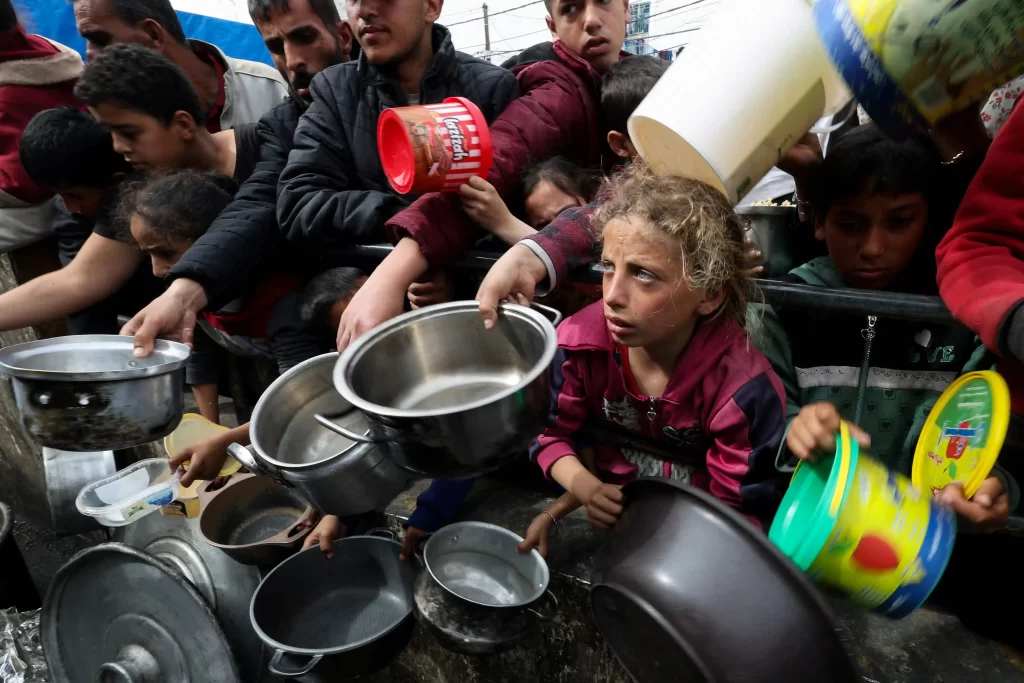اینجا 50 لغت انگلیسی در مورد قحطی (famine) با معنی فارسی آنها هستند و در متن نیز از این لغات استفاده شده است:

برای دانلود فایل آموزشی مقاله لغات مربوط به Famine روی لینک زیر کلیک کنید:
1. famine – قحطی
2. hunger – گرسنگی
3. starvation – گرسنگی شدید
4. malnutrition – سوءتغذیه
5. drought – خشکسالی
6. crop failure – شکست محصول
7. food insecurity – ناامنی غذایی
8. relief – کمک
9. aid – یاری
10. humanitarian – بشردوستانه
11. resources – منابع
12. poverty – فقر
13. agriculture – کشاورزی
14. distribution – توزیع
15. emergency – اضطراری
16. nutrition – تغذیه
17. resilience – تابآوری
18. community – جامعه
19. support – حمایت
20. intervention – مداخله
21. supply – تأمین
22. demand – تقاضا
23. policy – سیاست
24. awareness – آگاهی
25. education – آموزش
لغات مربوط به Famine
26. advocacy – حمایت
27. sustainability – پایداری
28. local food systems – سیستمهای غذایی محلی
29. famine relief – کمکهای قحطی
30. health – سلامت
31. sanitation – بهداشت
32. emergency response – واکنش اضطراری
33. international aid – کمکهای بینالمللی
34. drought-resistant – مقاوم به خشکسالی
35. food distribution – توزیع غذا
36. resilience building – ساخت تابآوری
37. social services – خدمات اجتماعی
38. food production – تولید غذا
39. agricultural practices – شیوههای کشاورزی
40. climate change – تغییرات اقلیمی
41. ecosystem – اکوسیستم
42. vulnerability – آسیبپذیری
43. public health – بهداشت عمومی
44. famine prevention – پیشگیری از قحطی
45. collaboration – همکاری
46. grassroots – پایهای (مردمی)
47. food sovereignty – حاکمیت غذایی
48. emergency shelters – پناهگاههای اضطراری
49. livelihoods – معیشت
50. international cooperation – همکاری بینالمللی
متن لغات مربوط به famine
Famine is a severe crisis that can lead to widespread hunger and starvation. It often results from a combination of factors, including drought, crop failure, and poverty. When communities experience food insecurity, the consequences can be devastating, leading to malnutrition and health issues.
To combat famine, effective relief and aid efforts are essential. Humanitarian organizations work tirelessly to provide emergency support to those affected. This includes food distribution, nutrition programs, and improving sanitation to prevent disease outbreaks.
Raising awareness about the causes and impacts of famine is crucial. Education and advocacy can help develop policies that address the underlying issues. For example, improving agricultural practices and supporting local food systems can enhance food production and reduce vulnerability to future crises.
International cooperation is key in famine prevention and response. By collaborating with governments and local organizations, aid can be effectively delivered to those in need. Building resilience within communities helps them prepare for and recover from disasters.
In addition to immediate relief, it is important to focus on sustainability and long-term solutions. Food sovereignty and empowering communities to control their own food systems can significantly reduce the risk of famine. Furthermore, investing in emergency shelters and social services ensures that people have the support they need during crises.
Ultimately, addressing famine requires a multifaceted approach that includes collaboration, education, and dedicated resources. By working together, we can create a world where everyone has access to sufficient and nutritious food, eliminating the threat of famine for future generations.


